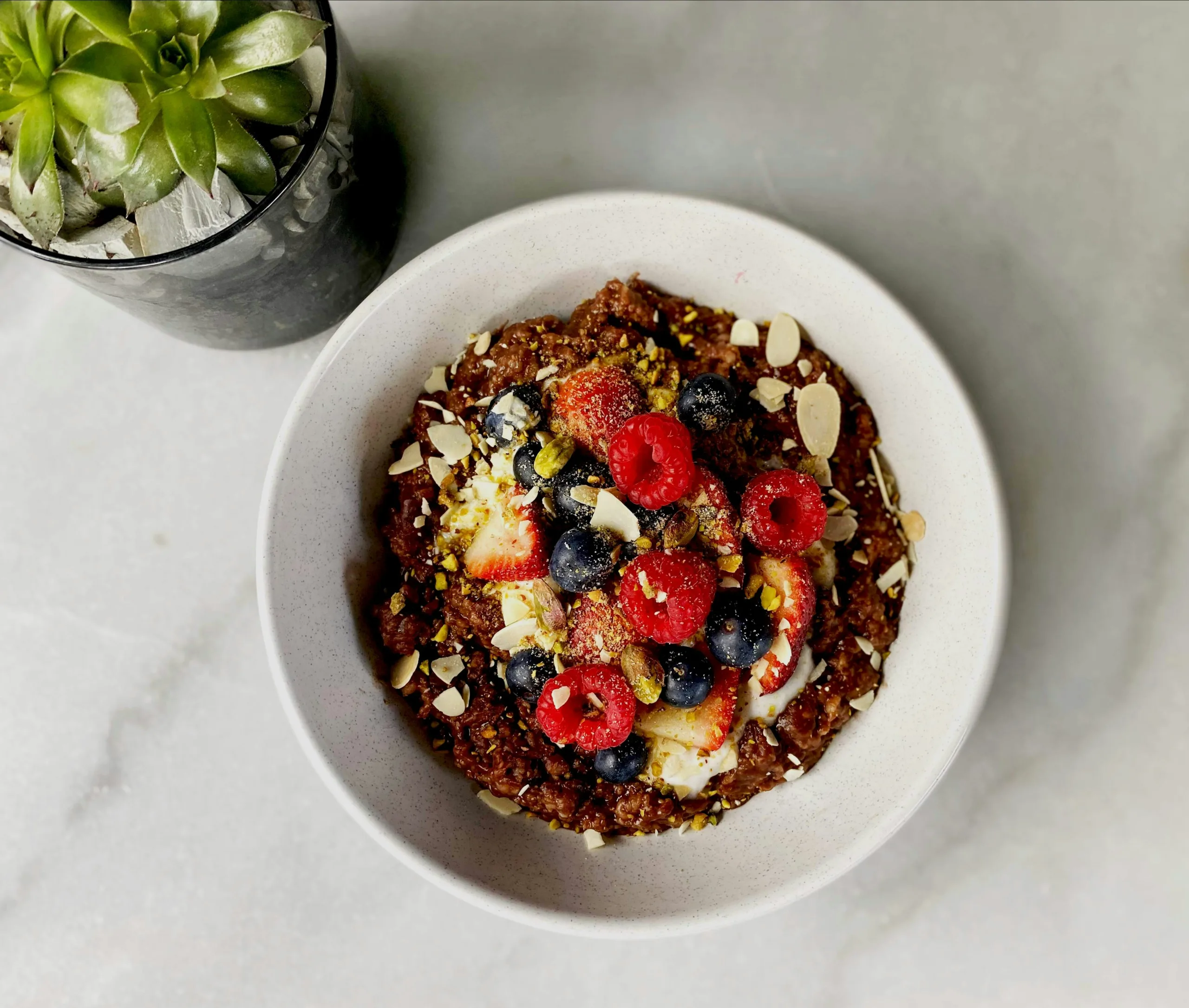You thought you had the brown rice vs white rice argument put to bed already. You’ve been told to eat whole grains and you’ve even made the big switch to brown rice when treating yourself to sushi and Chinese. But, you’re not really loving it and you’re wondering what the real deal is with it. Let’s put it to bed for good this time.
The Low Down on White Rice
White rice is uber processed. When you hear that you should be avoiding all “processed and refined grains”, well, white rice is at the top of that list.
A grain is considered a whole grain when it includes 3 parts: the bran, germ, and endosperm. The bran is the outer skin of the edible kernel. It contains antioxidants, B vitamins, and fiber. The germ also contains B vitamins, some protein, minerals, and healthy fats. The endosperm contains mostly carbohydrate, protein and some vitamins and minerals.
White rice has both the bran and germ removed, leaving only the endosperm, which is the nutritionally almost void part of the grain.
When you’re downing that bowl of rice with your General Tso’s chicken, you’re not consuming any fiber and you’re getting less B vitamins, folate, potassium and protein than brown rice.
Science has even shown a potential connection between a diet high in white rice and an increased risk of Type 2 diabetes, metabolic syndrome, and cardiovascular disease.
Side note: Most white rice produced in the US is enriched to add thiamin (vitamin B1), iron, and folate back into it, leaving it nutritionally greater in these vitamins compared to brown rice.
So Is Brown Rice Really the Better Option?
Though white rice is enriched, it’s still missing the added benefits that brown rice has including protein, fiber, potassium, selenium, choline, phosphorus, and magnesium.
The higher amounts of fiber in brown rice will also work to keep you fuller longer, potentially making you consume less calories over time. It also improves the good gut bacteria of your microbiome.
Studies have shown that regular consumption of whole grains is associated with a lower risk of Type 2 diabetes. Makes sense because brown rice is lower on the glycemic index.
This study in particular shows that a group of overweight people who ate more brown rice than white were successful in reducing their glucose levels as well as their resistance to insulin.
Brown rice has almost 4 times as much of the mineral magnesium compared to white, important for healthy bones and teeth and also helping regulate blood glucose levels and blood pressure.
You get a whopping 88% of your daily requirements of manganese from brown rice, a mineral involved in collagen production (making it super important for skin health.)
Brown Rice vs White Rice: The Verdict
Still weighing your rice options? Generally, it’s always best to go whole. Whole real food wins again. Yes, you may get a little less B vitamins and iron but you’ll win in all other ways.
Want to take it up a notch? Go for germinated brown rice. Nutrients are more bioavailable when consuming sprouted brown rice. Put in a request at your local sushi joint.
And if you wanna add even more color to your rice bowl, check out black rice.





























